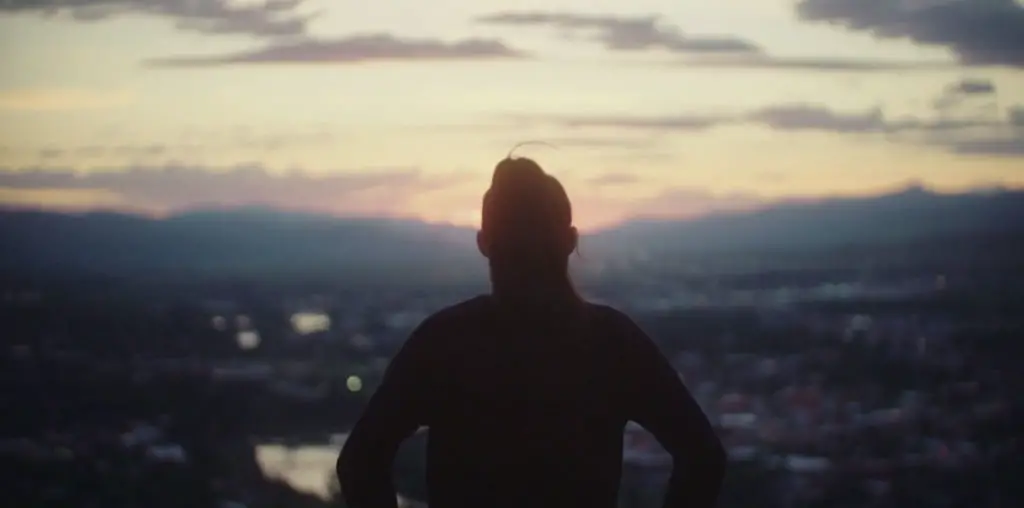
1. DELIVERANCE (1919) ^ The life of Helen Keller and her rescue from the void of her deafness and blindness was the subject of this silent drama, which actually featured Helen, her celebrated teacher Anne Sullivan, and her parents Phillips and Kate Keller as themselves. The film covered the extraordinary education of a young Helen by Anne Sullivan through flashback re-enactments with actors playing the famous student and teacher, and then covered the then-current lives of Helen and Anne as they appeared in 1919. This film is believed to be the first feature to offer a positive depiction of the disabled and Helen Keller’s performance (no mean feat for someone who is blind and deaf) is perhaps the first captured on film by a disabled individual. ^ WHY IS THIS FILM NOT ON VIDEO? While considered a special film for its content and cast, “Deliverance” was regarded as a so-so film when it first came out. An extant print of the film exists in an archive, but the film’s public domain status and the lack of commercial viability for silent films on video negates any interest in bringing this title into home entertainment channels.
2. TELL IT TO THE MARINES (1927) ^ Lon Chaney jettisoned his trademark elaborate make-up for a straightforward and powerful performance as a Marine drill instructor who wears down a brash recruit (William Haines) and eventually makes him into a real man (Semper Fi, indeed). Regarded as one of Chaney’s finest performances, the MGM film was also his most expensive (with a budget of $433,000) and also his most profitable (earning $1,250,000 at the box office). In recent years, the film has gained new attention by a renewed interest in the life and career William Haines, who was among the very few openly gay stars in Hollywood during the 1920s and early 1930s. ^ WHY IS THIS FILM NOT ON VIDEO? “Tell It to the Marines” is extant and in fine condition, but the home video market for silent films is so weak and the perception of Lon Chaney as being little more than an old-time horror film star have combined to keep this forgotten classic out of home entertainment channels. The film occasionally turns up on the TCM cable television channel, which is the only way most people can get to see “Tell It to the Marines” today.
3. TWO ARABIAN KNIGHTS (1927) ^ Oscar trivia buffs will recognize “Two Arabian Knights” and its director Lewis Milestone for winning the first and only Academy Award presented for the direction of a comedy feature. The debut Oscar ceremony had two directing awards, for a comedy and a drama, but that split was changed with the second Oscar-go-round and has remained in place ever since. This breezy film followed two American soldiers in the Middle East who enjoy adventures ranging from being prisoners in a dungeon to being hailed as conquering heroes. William Boyd (who later gained immortality as Hopalong Cassidy) and Louis Wolheim were the eponymous knights while Mary Astor played an Arabian seductress and Boris Karloff has a small role as a ghoulish ship’s purser. ^ WHY IS THIS FILM NOT ON VIDEO? The rights to “Two Arabian Knights” are controlled by the estate of Howard Hughes, but the film has been out of circulation for so many years that some film historians have speculated it is lost. The film is believed to still exist in an extant print, but no known effort has been made to bring it back for re-release. It remains an elusive footnote, recalled primarily for its special Oscar designation.
4. THE LETTER (1929) ^ While most movie lovers have cherished the 1940 Bette Davis version of this W. Somerset Maugham drama, few people have ever seen the original 1929 early talkie version starring the luminous but ill-fated Jeanne Eagles. Perhaps the greatest Broadway star of her day, Jeanne Eagles only made a few film appearances in the silent and early sound cinema and most of her screen work is now considered lost. “The Letter” was perhaps her finest film and she earned an Oscar nomination for her stunning portrayal of a British woman whose claims of self-defense in shooting a man in colonial Malaya slowly come undone during her trial. Sadly, the great star made “The Letter” during the tail end of her long and losing battle against drug and alcohol addiction and she was dead a year after the film was completed. ^ WHY IS THIS FILM NOT ON VIDEO? The sole surviving print of “The Letter” is a working print without a music score and with choppy editing. The American Film Institute owns the print, but has not made it public for review since the early 1970s.
Get the complete list in the next part of NEVER ON VIDEO: THE TOP 20 “MISSING” MOVIES>>>

